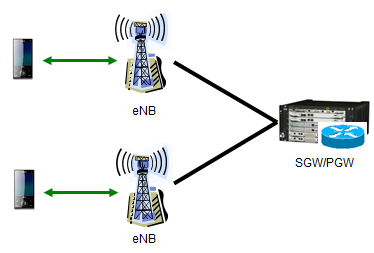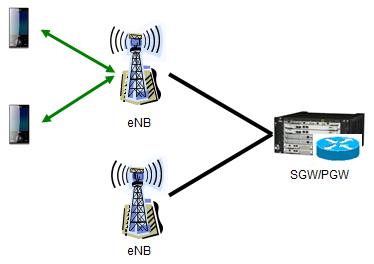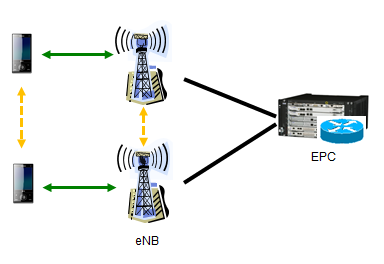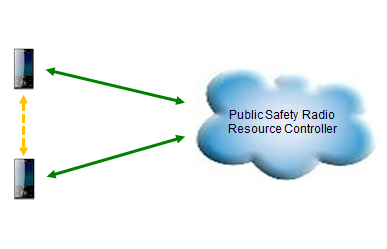|
4G/LTE - LTE Advanced |
|||||||||||||||||
|
D2D
D2D stands for 'Device to Device'. It implies 'Direct communication between Devices'. In current implementation (i.e, without D2D), every communication between devices has to go through the full path of the network. Conceptually, ideal goal of D2D would be to establish the communication path between them without any intermediate component (e.g, eNB etc). Probably Bluetooth can be regarded as the best example of D2D just in terms of concept (Of course, we don't take Bluetooth as a part of 3GPP D2D) and now you may hear a lot of Direct WiFi. However, in reality it seems likely that D2D would get at least a few of intermediate component (e.g, eNB) between the devices.
However in the context of LTE (or any other wide scale wireless communication), it is not that simple to achieve D2D. Probably followings would be the biggest hurdles to overcome.
With these factors being considered, the concept being formally proposed/investigated in 3GPP seems to assume that it would be difficult (almost impossible) to completely exclude network involvement but it would be possible to minimize it.
I will try to keep posting things being investigated/proposed by 3GPP rather than putting too much fancy stories.
Who will be the master ? Network or UE ?
In normal LTE and other celluar communication, Network is almost always the master and it controls everything. What about in D2D ? Will the situation still be the same ? or Will UE get more controling power ? At least in current specification, it seems that Network still hold the controlling power. It means the control signaling (e.g, Initial access, authentication, connection control, resource reservation) is handled by the network.
One possible except would be the case for public safty area such as emergency/disaster case. In this situation, there might be the situation where the network is down. Even in this csae, communication between security forces should still be possible. Therefore, there is some possibility that the future specification would support an autonmous control by UEs or a hybrid approach with the distributed control between network and UEs. (Reference [3])
Data Path
Following is the possible configuration proposed by TR 22.803 Feasibility Study for Proximity Services (ProSe). The final requirement can be different as it moves forward to TS document. But this can be a good start for you to think of as many possibilities as possible.
Control Path
Following is the possible configuration proposed by TR 22.803 Feasibility Study for Proximity Services (ProSe). The final requirement can be different as it moves forward to TS document. But this can be a good start for you to think of as many possibilities as possible.
Reference
|
|||||||||||||||||





